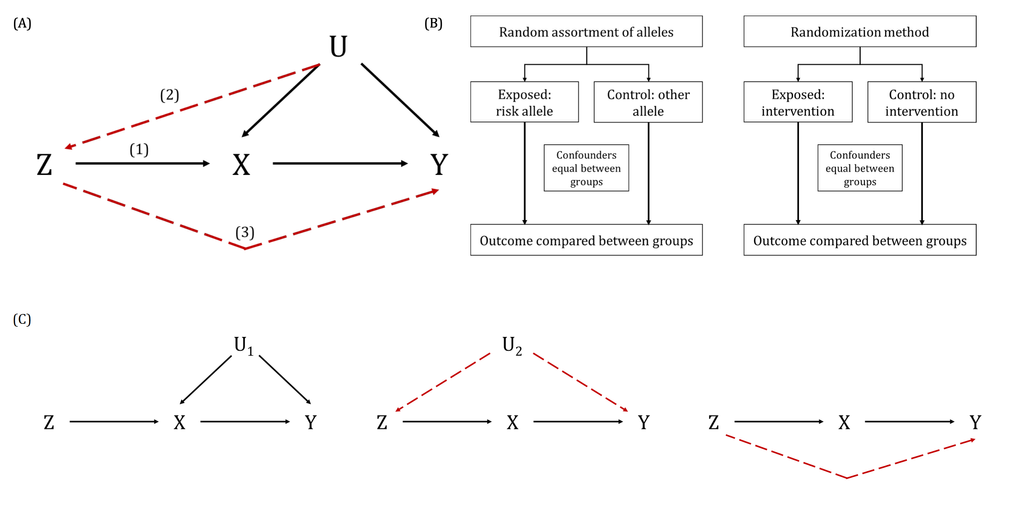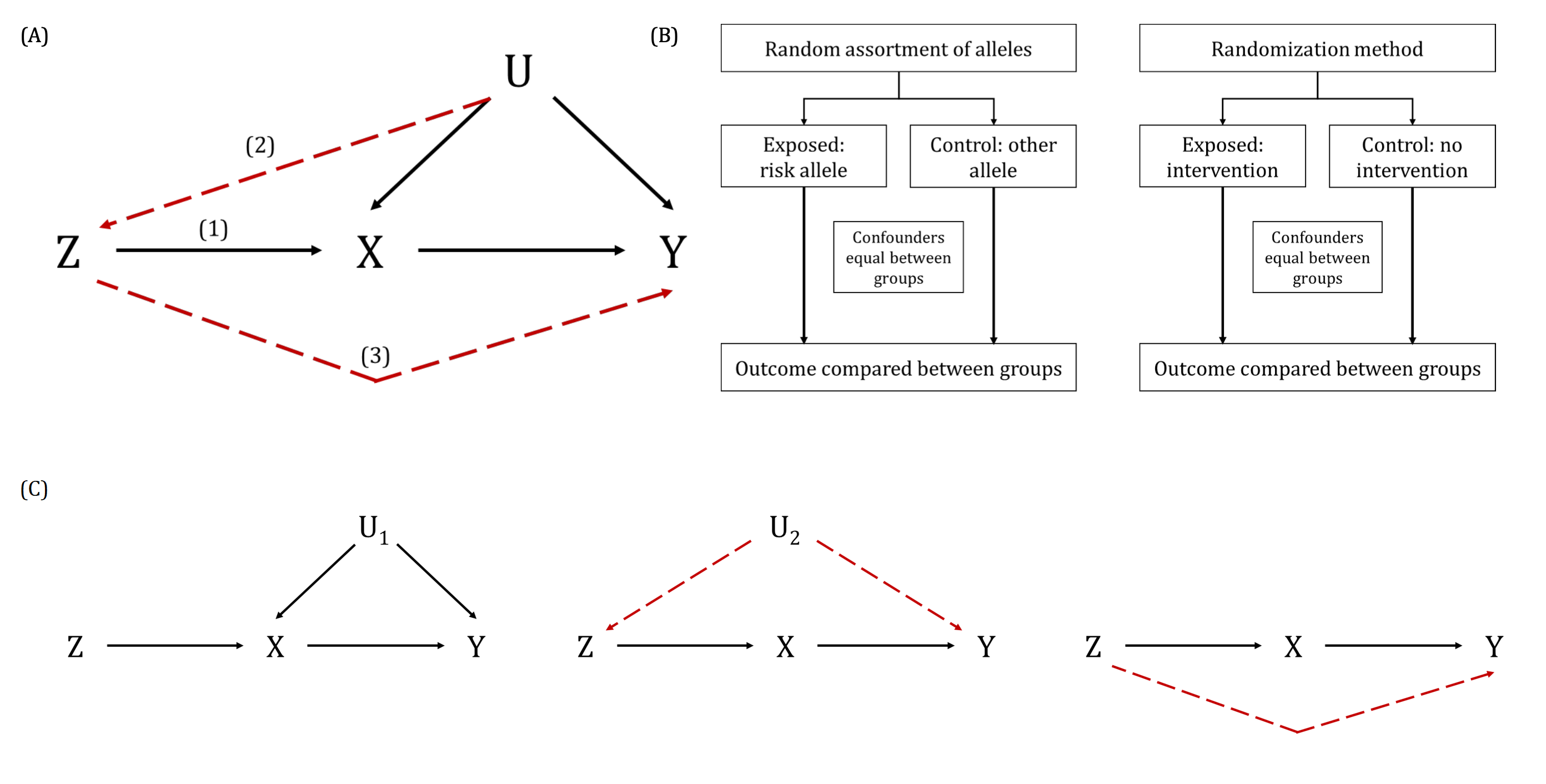Synonyms: Mendelian randomisation (MR)
A method that uses genetic variants (usually single nucleotide polymorphisms (SNPs)) as instrumental variables (IVs) to explore causal effects of exposures on outcomes in observational epidemiological studies.
Genetic IVs must fulfil the MR assumptions (as defined by IV analyses). In most MR studies, the assumption that is most likely to be violated is the exclusion restriction assumption due to horizontal pleiotropy. See IV.

References
- Haycock PC, Burgess S, Wade KH, Bowden J, Relton C, Davey Smith G. Best (but oft-forgotten) practices: the design, analysis, and interpretation of Mendelian randomization studies. Am J Clin Nutr 2016; 103: 965-78.
- Honkanen R, Pulkkinen P, Järvinen R, et al. Does lactose intolerance predispose to low bone density? A population-based study of perimenopausal finnish women. Bone 1996; 19: 23-28.
- Katan MB. Apolipoprotein E isoforms, serum cholesterol, and cancer. International Journal of Epidemiology 2004; 33: 9-9.
- Lawlor DA, Harbord RM, Sterne JAC, Timpson NJ, Davey Smith G. Mendelian randomization: using genes as instruments for making causal inferences in epidemiology. Statistic in Medicine 2008; 27: 1133-1163.
- Davey Smith G, Ebrahim S. "Mendelian randomisation": can genetic epidemiology contribute to understanding environmental determinants of disease? International Journal of Epidemiology 2003; 32: 1-22.
Other terms in 'Definition of MR and study designs':
- Bidirectional MR
- Factorial MR
- Instrumental variable (IV)
- MR for drug targets
- MR with binary exposures
- Multivariable MR
- One-sample MR or MR with individual-level data
- Two-sample MR or MR with summary-level data
- Two-step or Mediation MR

